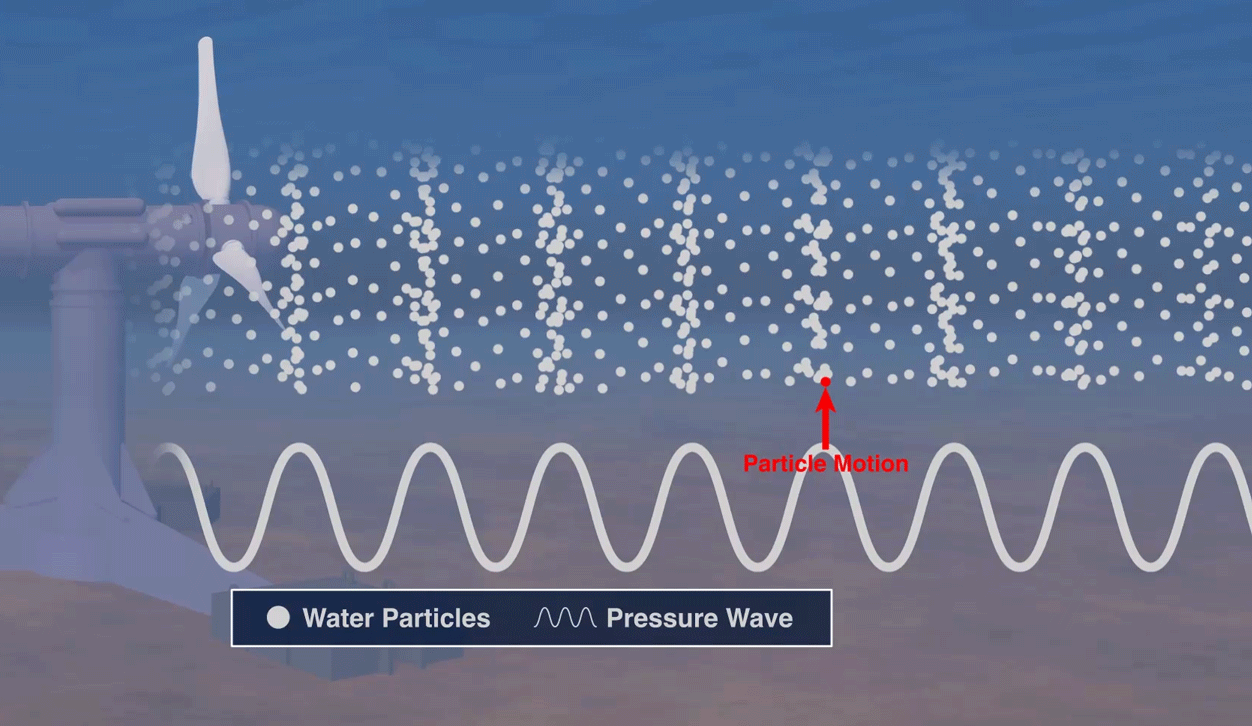Acoustic Particle Motion
Acoustic energy can be characterized by two interrelated components: sound pressure and particle motion. Sound travels through water as an acoustic wave characterized by regions of compression and rarefaction (higher and lower densities of water molecules). Meanwhile, particle motion involves the movement of individual particles oscillating back and forth in alignment with the sound pressure waves. When this vibrational energy travels through sediment, it is known as substrate vibration.

Studies have shown that particle motion is likely detected by most aquatic invertebrates and all fishes that detect sound. Meanwhile, sound pressure is only sensed by mammals and some fishes that have specialized ears and related structures, and likely not by any invertebrates. Traditionally, underwater noise effects on marine species are based on observed effects and sound level measurements from hydrophones, which measure the pressure amplitude of sound waves. Conversely, vector field measurements are more complicated, and there are only a handful of commercially available options for underwater vector sensors.
There is a need for research focused on collecting data from both hydrophones and acoustic vector sensors in the shallow water, which are high energy areas suitable for marine energy, to better understand the relationship between sound pressure and particle motion in complex marine environments. Furthermore, a better understanding of the behavioral and physiological responses of fishes and invertebrates to varying levels and characteristics of the particle motion and substrate vibration components of underwater sound from marine energy is an important priority.
Triton's Contributions to Acoustic Particle Motion Research
To address the effects of particle motion and substrate vibration on animals, the Triton team is conducting acoustic and substrate vibration dose-response experiments in laboratory tanks with fishes and invertebrates. This research will dig into the challenging questions about how particle motion and substrate vibration from offshore renewable energy development may affect important species, removing uncertainties and filling knowledge gaps. The project team is exploring behavioral and physiological responses from animals in controlled exposures using a calibrated projector of underwater sounds for particle motion and an electromagnetic shaker mechanism for substrate vibration.

The Triton team recently began the experimental design and setup for these exposure experiments at PNNL-Sequim and PNNL-Richland. Using physiological indicators, such as hormone levels, the team will quantify stress response while correlating any behavioral observations when different acoustic stimuli are presented to the animals. Specifically, Triton will study the exposure effects on species with cultural and commercial significance, beginning with salmon and Dungeness crabs.
In the coming years, the team aims to expand these experiments from the tanks into Sequim Bay as the project progresses from small-scale laboratory experiments to mesocosm studies in a controlled open-water environment.
To learn more about Triton's Acoustic Particle Motion Project, read Triton Explains: Acoustic Particle Motion and Marine Energy